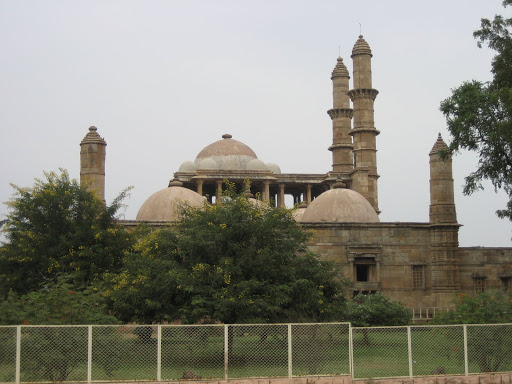Holidays in India offer plethora of options to the tourists. One of an important destination for tours to India is the state of Gujarat with its vibrant culture and multiplicity of tourism activities. Gujarat is renowned for its diversity, historical sites and varied wildlife. Popularly known as the “Jewel in the West”, Gujarat is one of the famous tourist destinations in India known for its cosmopolitan hospitality. From historical monuments to magnificent temples, wildlife to colorful festivals, Gujarat tours offer almost everything to make your vacations astounding.
 |
| Jama Masjid in Ahmedabad Gujarat built in mid 15th Century |
Gujarat has a 1600km coastline and an easily traversable landscape. Gujarat has an industrious reputation, thanks to its Jain Community known for their veneration of ‘divine consciousness and liberation’. Stunning white marble temples, ever-so-slightly sweet vegetarian fare and prohibition laws – alcoholic beverages are banned in the state – most of it could be attributed to this industrious and pacifist community. Gujarat tours let you choose from among a multiple of options. A few of the major tourist destinations in Gujarat according to regional segregation are listed below.
Ahmedabad
“Manchester of the East”, Ahmedabad is renowned as the commercial capital of Gujarat. In other words, it is the commercial hub of the state. Ahmedabad enjoys a booming cultural tradition, rich culinary traditions and the forte of the city is their folk art. The attractions include Gujarat Science City, Calico Museum of Textiles, Swaminarayan Mandir, Jama Masjid, Vastrapur Lake and Hathee Singh Jain temple.
Vadodara
Vadodara, also known as Sanskari Nagari, is situated on the banks Vishwamitri river and an important destination of Gujarat tours. The traditional handicrafts of the city are famous all across the country, which include embroidery with gold, silver and silk thread, gold and silver ornaments, and engraving on ebony, sandalwood and other wood and lacquer work. Vadodara is one of the most visited tourist destinations in Gujarat. Champaner-Pavagadh Archaeological Park, emblazoned as UNESCO World Heritage Site in 2004, is situated nearby.
 |
| Champaner Pavagarh Archaelogical Park Near Vadodara located in Panchmahal district in Gujarat, India. It was inscribed in 2004 as UNESCO World Heritage Site |
Gandhinagar
Gandhhinagar, situated on the west bank of the Sabarmati River, is the capital of the state. It is the second planned city in India after Chandigarh and is renowned for its Educational and Research Institutes. The city presents the spacious and well organized look for an architecturally integrated city. The city is famous for some of its attractions, which will entice your attention towards their mesmerizing charm. The attractions include Akshardham temple, Children’s Park, Sarita Udyan, Deer Park and Craftsmen’s Village.
Porbandar
The birth place of the “Father of the Nation” – M.K. Gandhi, Porbandar has got its name registered in the history of the country. It is also popularly known as the “White City” because of its white stone construction. Situated on the west coast of India, the city is remarkably planned with stone structures and rich carvings. The city has numbers of religious places and public buildings overlooking the vast expanse Arabian Sea. There are many attractions, which you would like to explore such as Kirti Mandir, Darbargadh, Sudama Mandir, Chowpati, Huzoor Palace and much more.
Junagadh
Situated at the foot of Girnar Hill, Junagadh takes its name from the ‘Old Fort’, which encircles the medieval town. It is a wonderful nature reserve for various flora and fauna and is also the dwelling of the majestic Asiatic Lion. It is an ancient city, which has many eye catching temples, museums, palaces and caves. Some of the tourist attractions of the city are Somnath, Girnar, Uparkot Fort, Chorwad Beach and Sasan Gir Forest and Sanctuary.
District of Surat is another major tourist and commercial destination in Gujarat. it is situated by the bank of Tapti River and is renowned for its textile and diamond businesses. It is also known as the diamond capital of the world and the textile capital of India. Besides these destinations, region of Kutch and destinations such as Lothal, an Archaeological Site and a major city during heydays of Indus Valley Civilization are much popular destinations when it comes to Gujarat tours. Despite its limited diversity in terms of geography, Gujarat certainly scores at the top when it comes to holidays in India, thanks to its industrialization and rapid growth in infrastructure and standards of living.

